INFORMATION PROVIDED BY:
Charlie Fitzpatrick | Esri Schools Program Mgr
2001 N 15th St #1403 | Arlington, VA 22201
v 651-994-0823 x.1-8349 | m 651-323-7280
cfitzpatrick@esri.com | @FitzpatrickC
http://esriurl.com/k12gis | http://connected.esri.com
Here is a “nutrient dense” set of info about setting up ArcGIS Online Organizations. This one-hour “training seminar” — screens plus voices — is by two of the Esri staff involved in helping people grasp how to set up Orgs effectively. It is for a broad audience, but there is much that can be helpful in an education setting. Viewing is free and requires just an Esri Global ID. http://training.esri.com/gateway/index.cfm?fa=catalog.webCourseDetail&courseID=2802
The development team for ArcGIS Online released a bunch of new capacity which actually takes a bit to explore and grasp. The bottom line is that ArcGIS Online offers users more capabilities and administrators more control, and everyone much more information.
For full details about what exists and how one can take advantage of it, the new and improved documentation offers a lot of information in a much more digestible format. See the starting point here:
http://doc.arcgis.com/en/arcgis-online/index.html
To get a look just at what’s new, see the “What’s new?” section:
http://doc.arcgis.com/en/arcgis-online/reference/whats-new.htm
It may not look like a lot is new but there is significant information to consume. See especially the info about new role options, offline maps with Collector, and the increased granularity of the help documentation in the left-hand navigation.
One of the most popular and powerful implementations of ArcGIS Online capacity has been the development of StoryMaps. A team from Esri has been madly creating and curating and building templates in response to the interest. You can see StoryMaps about current events, historic phenomena, local tourist delights, and global crises. The team has just released a newly configured zone with better access through sorted collections, custom filtering, and more assistance for those who want to create their own. Powerful!
New address: http://storymaps.arcgis.com
To dip a toe gingerly into the ocean of online mapping, start with http://esriurl.com/ago5x5, which is also the first doc in the first button at http://k12statelicense.maps.arcgis.com
To explore ideas about teaching with ArcGIS Online, see this free online class: http://esriurl.com/vcteachingwithgis, a shortcut for http://training.esri.com/gateway/index.cfm?fa=catalog.webCourseDetail&courseid=2198
To learn about working with Organization subscriptions as an administrator, see these options:
- http://training.esri.com/gateway/index.cfm?fa=catalog.webCourseDetail&courseid=2580
- http://training.esri.com/gateway/index.cfm?fa=catalog.webCourseDetail&courseid=2738
- http://training.esri.com/gateway/index.cfm?fa=catalog.webCourseDetail&courseid=2768
(Of course, ArcGIS Online Orgs for K12 instruction have conditions that are different from those faced by business and government, so school org admins need to look at the larger concepts here: access, ease of use, security, and organization. Also remember that while #2738 and #2768 have a price, state license managers can provide free codes for these.)
Our friends in New York have made available the recording from yesterday’s webinar #2 of 3.
https://sas.elluminate.com/p.jnlp?psid=2014-02-25.1238.M.650685D2962F86392B542BC255622E.vcr&sid=2013296
This was a 60-minute exploration of some of the maps and content areas available from the Esri K12GIS AGO Org
http://esriurl.com/k12gis = http://k12statelicense.maps.arcgis.com
No sign-in or file saving was involved. It was simply an exploration of some of the resources available (looking at US and world demographic data, Landsat data, elevation profiles, StoryMaps) and the differences between applications (fixed content and fixed options) versus maps in the AGO Map Viewer (modifiable content and options).
Check out the blogs: Lots of good info, with the most rapid changes in ArcGIS Online:
http://blogs.esri.com/esri/arcgis/category/arcgis-online/
We want to alert every single school to the power some have discovered — that students of all ages can use ArcGIS Online to build content background, problem-solving strategies, and key skills that will engage them in the community and support them in college and career with unlimited opportunity.
Please look at http://connected.esri.com. Share this address with everyone in your state. Explore the entire ConnectED page and see how you can help others get started. The ArcGIS Online Skillbuilder can help educators and kids see quickly where they are and where they can go, and move from geographically unaware to an AGO novice to an effective user, ready to become a geoanalyst with an Organization account. With summer training events just around the corner for so many of you, please keep these in mind.
http://esriurl.com/funwithgis154
My blog for today notes a huge one: The starting appearance is even simpler, but there is a key step to get in and begin doing significant work without being logged in. And for those who have been using the “AGO5x5” doc (http://esriurl.com/ago5x5, and the first choice in the first button at http://esriurl.com/k12gis), the doc references this step.
The whole suite of changes is worth examination using the two links highlighted in the blog. Even more important is the larger message of the blog: there will continue to be rapid evolution of GIS technology, so users need to be good at learning anew, and educators need consciously to model the lifelong learner.
Many states have STEM academies or STEM-minded programs in schools. Frequently, I hear requests to relate GIS and STEM, particularly around careers. A great place to see the mingling of STEM, careers, and GIS is online:
Explore what people do with geospatial technology. See the Industries page to learn where people use GIS, see their maps in the MapMuseum, and then check out the videos and stories about users. These highlight the common thread of geographic analysis using GIS to solve problems and accomplish essential tasks, from the “mundane” (e.g. land management, marketing, or managing infrastructure) to the “mission critical” and life-saving (e.g. security, public safety, disaster preparedness, humanitarian support). All the way through, you see people using, customizing, or developing software that engages broad realms of knowledge, scientific thinking, mathematical analyses, problem solving, and communication.
